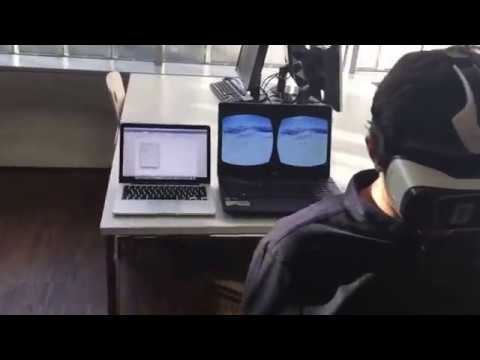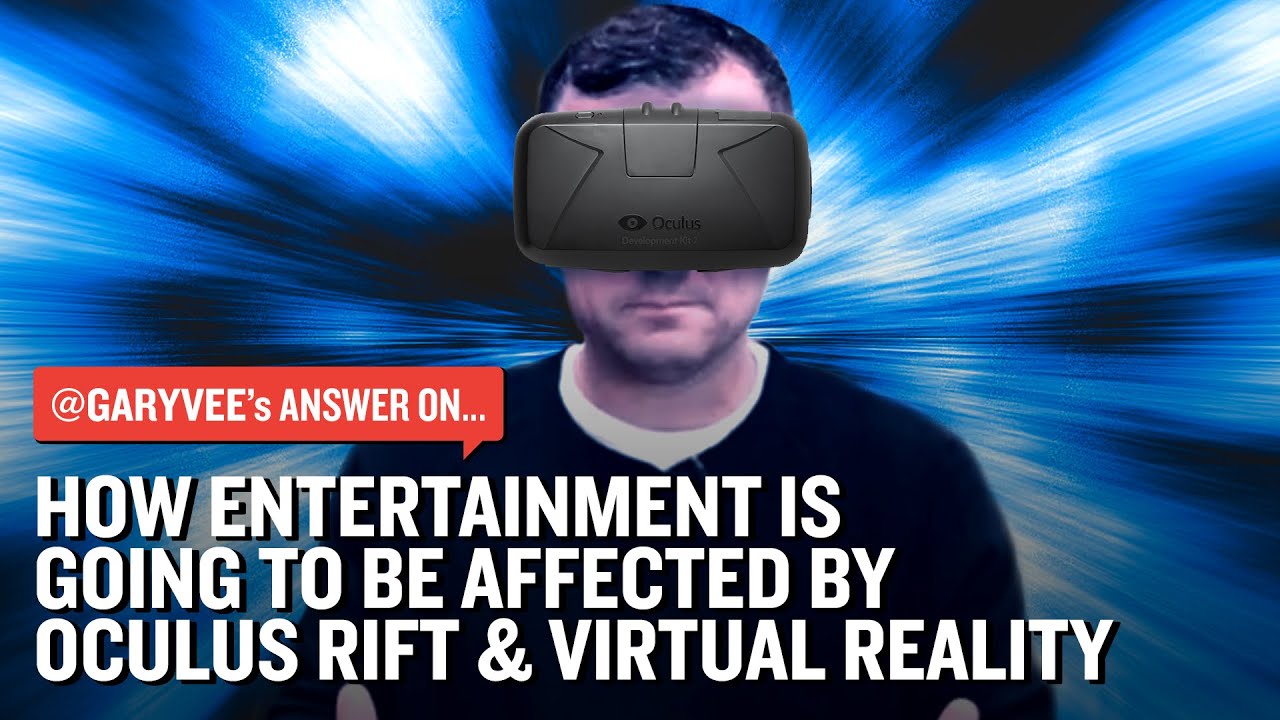Artificial Intelligence (AI) in Healthcare is Expected to Grow to $36.1 billion by 2025
According to Markets and Markets, Artificial Intelligence (AI) in healthcare is expected to grow from $2.1 billion in 2018 to $36.1 billion by 2025, at a CAGR of 50.2% during the forecast period.
That’s the highest growth percentage among the growing industries we have previously analyzed on this blog: pet-food (4,8%), gaming, health & wellness (12.8%) and health & fitness (10%).
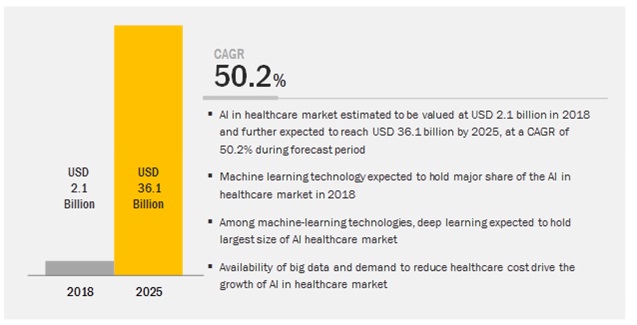
Source: marketsandmarkets.com
Topics:
- Reasons why Artificial Intelligence is disrupting the healthcare industry
- Artificial Intelligence in healthcare statistics
- Factors driving and limiting growth
- Artificial Intelligence applications in healthcare
- Examples of AI-powered apps
- Trends via CBInsights
- Big pharma partnerships with AI healthcare startups
Why is Artificial Intelligence disrupting the healthcare industry?
The reasons Artificial Intelligence is changing healthcare are quite obvious. AI is quicker and better than human doctors: the machine takes 15 seconds to read and diagnose scans while doctors arrive at a diagnosis in 30 minutes.
AI brings many benefits to the healthcare industry worldwide. Data-driven products and services result in cost cuts, treatment improvement, increased accessibility, higher-quality personalization and a more accurate initial diagnosis which leads to a more effective treatment plan.
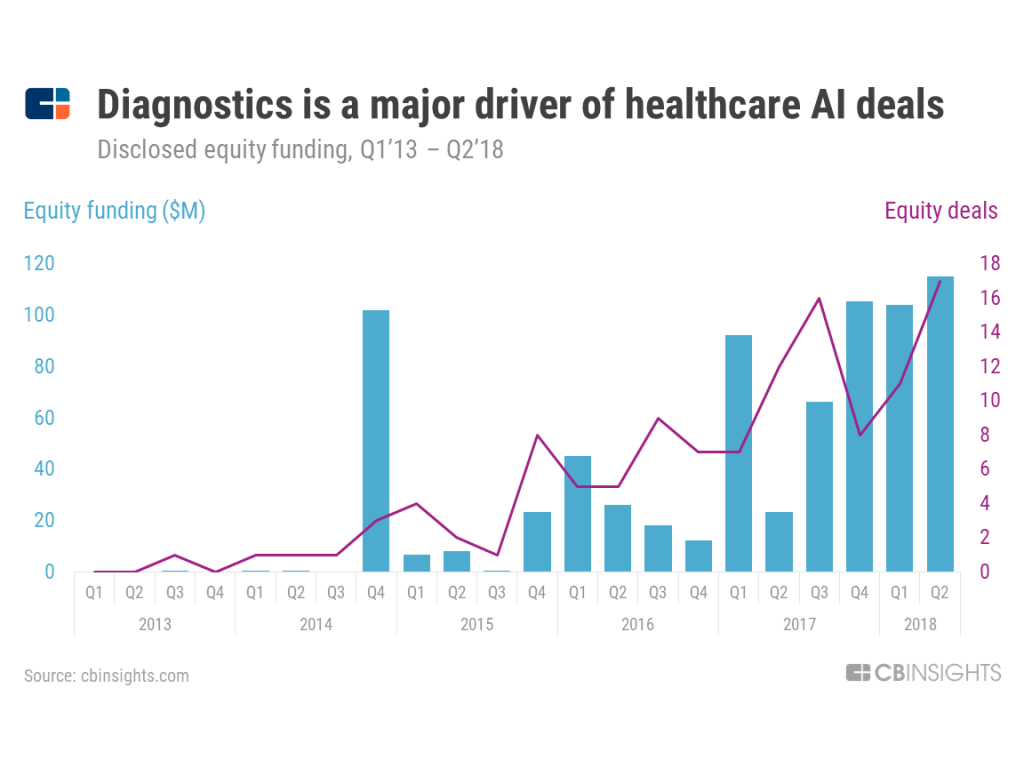
Artificial Intelligence in Healthcare Statistics
Between 2013 and 2017, more than 300 health care AI-related patents were issued with the following technology giants leading the charge: Alphabet filed 186 patents, Microsoft – 73 and Apple – 54.
Funding for U.S.-based AI and machine-learning health companies has increased more than 2,000% since 2011.
Factors driving the growth of Artificial Intelligence in healthcare
- increased number of artificial intelligence solutions;
- the ageing of baby boomers and prolonged life expectancies;
- advancements in clinical research;
- advancements in personal digital assistants;
- AI’s enhanced ability to reach an accurate diagnosis in the early stages of chronic diseases and disorders;
- increased funding in healthcare Artificial Intelligence;
- effective cost reduction in healthcare expenditures;
- the growing number of startups for AI in healthcare;
- the ability to share health information easily across institutions and software systems which is one of the most pressing issues in healthcare.
According to Healthcare Weekly, AI startups have raised $4.3B across 576 deals since 2013, topping all other industries in AI deal activity.
Factors limiting the growth of Artificial Intelligence in healthcare
- end-users’ reluctance to adopt Artificial Intelligence technologies;
- potential risks associated with Artificial Intelligence in healthcare;
- lack of trust.
Artificial Intelligence applications in healthcare
- appointment scheduling;
- insurance coverage checking;
- clinical imaging & diagnostics;
- developing new drugs;
- monitoring patients progress;
- precision surgery.
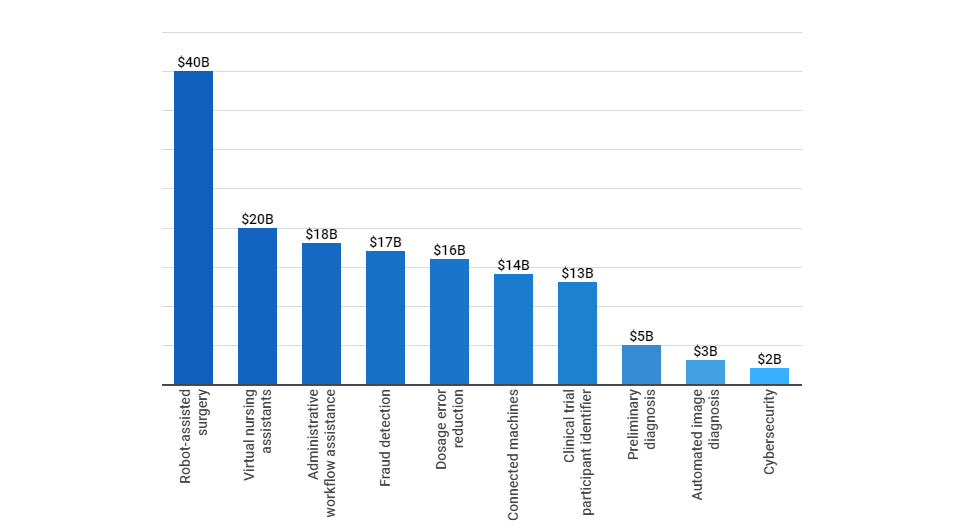
Source: forbes.com
AI-powered apps
Here, on the blog, we have talked about AI-based apps extensively.
Here are 3 healthcare apps developed on AI-based technology:
- the Child Growth Monitor built on Microsoft artificial intelligence solutions;
- Ginger.io, an app which offers professional coaching services to support employees’ emotional wellness;
- Replika, an app which helps users unlock their emotional intelligence.
7 Trends for AI in healthcare via CBInsights
1. AI-as-a-medical-device
Here are 3 AI software platforms which FDA has already approved:
IDx-DR is an AI software that screens patients for diabetic retinopathy without the need for a second opinion from an expert. The results are remarkable: it was able to correctly identify patients with “more than mild diabetic retinopathy” 87.4% of the time, and identify those who did not have it 89.5% of the time.
Viz.ai analyzes CT scans and notifies healthcare providers of potential strokes in patients. The company closed a $21 million Series A round from Google Ventures and Kleiner Perkins Caufield & Byers.
Arterys was FDA-approved last year for analyzing cardiac images with its cloud AI platform.
2. Using neural networks to identify the risk of heart disease
AI could potentially help identify the risk of heart disease. One algorithmic approach showed 85% accuracy in detecting diabetes from heart rate.
3. Building a clinical research ecosystem
With iPhone and Apple Watch, Apple is the first tech company to build a health records ecosystem. Since 2015, Apple has launched two open-source frameworks — ResearchKit and CareKit — to help clinical trials recruit patients and monitor their health remotely.
In January 2018, Apple announced that iPhone users will now have access to all their electronic health records from participating institutions on their iPhone’s Health app.
4. Traditional pharma companies looking to AI SaaS startups for innovative solutions
Big pharma companies have recognized the huge potential and the benefits AI can offer to healthcare.
Pfizer entered into a strategic partnership with XtalPi — an AI startup backed by tech giants like Tencent and Google — to predict pharmaceutical properties of small molecules and develop “computation-based rational drug design.”
5. Chinese investments in AI healthcare are on the rise
The Chinese government issued an artificial intelligence plan last year, with a vision of becoming a global leader in AI research by 2030. Healthcare is one of the 4 areas of focus for the nation’s first wave of AI applications.
Chinese big tech companies are now entering into healthcare AI with strong backing from the government. WeChat, Facebook’s competitor in Asia has reached 1 billion users. Also called the “app for everything”, WeChat reported 38,000 medical institutions had accounts last year, of which 60% allowed users to register for appointments online. Also, more than 2,000 hospitals accept WeChat payment.
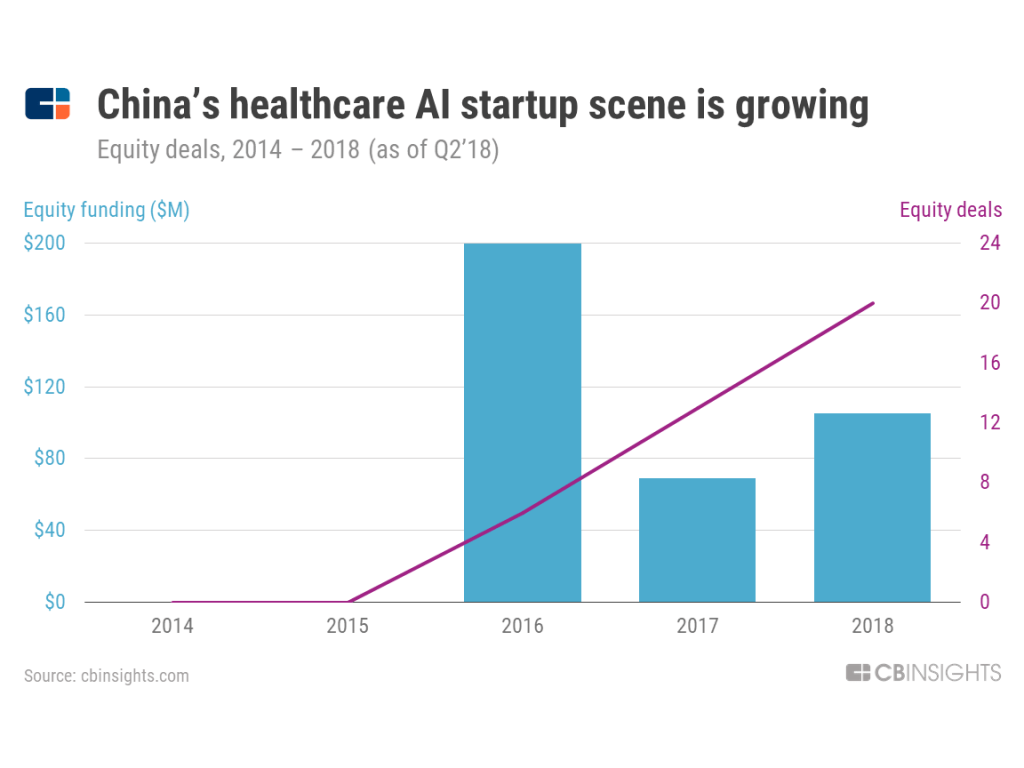
6. DIY diagnostics
AI has turned smartphones and consumer wearables into powerful at-home diagnostic tools. Dip.io performs urine analysis via a smartphone camera and SkinVision monitors skin lesions and assess skin cancer risk.
7. Therapy bots
From life coaching to cognitive behavioural therapy to faith-based healing, therapy bots support users’ mental health and help them change negative thoughts and behaviours through conversations. Check them out: Woebot, Wyse, Tess, Sister Hope, WisdomBot etc.
Big pharma partnerships with AI healthcare startups
1.Pfizer partnered with XtalPi, a U.S.-China biotech firm that uses artificial intelligence and computing to accelerate the development of new drugs. XtalPi has raised a total of $67.6M in funding.
2. Merck partnered with Atomwise which develops artificial intelligence systems for drug discovery. Atomwise has raised a total of $51.3M in funding.
3. GlaxoSmithKline partnered with Insilico Medicine which develops high-performance AI platform for drug development to treat cancer and age-related diseases. Insilico Medicine has raised a total of $14.3M in funding.
4. Mayo Clinic partnered with Beyond Verbal which uses voice and AI to revolutionize healthcare, well-being and emotional Understanding. Beyond Verbal has raised a total of $10.1M in funding.
5. Novartis partnered with Pear Therapeutics to create software applications to treat patients with schizophrenia and multiple sclerosis. Pear Therapeutics has raised a total of $134M in funding.
6. Sanofi partnered with Recursion Pharmaceuticals which combines experimental biology, automation, and artificial intelligence to discover treatments. Recursion Pharmaceuticals has raised a total of $226.4M in funding.
7. Janssen Pharmaceutical partnered with BenevolentAI, an advanced technology company focused on accelerating the journey from data to medicines. BenevolentAI has raised a total of $202M in funding.
8. Roche Holding acquired Flatiron Health for $1.9B in February 2018. Flatiron uses machine learning to mine patient data.
Sources: healthcareweekly.com, cbinsights.com, forbes.com, fastcompany.com, crunchbase.com
Join the Conversation
We’d love to hear what you have to say.
Get in touch with us on Facebook Group and Twitter.
5 domains that will be revolutionised by VR – part II
This is a continuation of last week’s article.
3. Healthcare and medicine
According to inc.com, one of the key implementations of virtual reality in the medical field is that it will allow doctors and medical professionals to practice procedures that they don’t regularly have access to in the office. There are a variety of different mobile virtual reality devices that are becoming equip to handle these exercises. Among them, Gear VR, VR One, and Google Cardboard have stood out as some of the most promising. These devices will dramatically change the way in which hospitals and health care facilities are able to train their nurses, doctors, and medical personnel. There are many instances of virtual reality already playing a role in training.
Nicklaus Children’s Hospital has recently partnered with Next Galaxy Corp, an augmented and virtual reality company, to create software designed for procedures in hospitals. The technology is centered on the virtual reality medical instructional software, which functions to guide users through procedures like a Foley catheter insertion, cardiopulmonary resuscitation, and wound care. As the technology continues to advance, training new employees will become easier and more cost effective. In addition, the training itself will be more effective. “By enabling the trainee to immerse himself in a virtual reality environment, the staff member is able to synthetize a much more realistic and memorable experience for the new employee. Among its many proven benefits, virtual reality has shown remarkable abilities in enabling medical staff to learn and retain information,” writes inc.com.
For the first time in the history of medicine, on 14 April 2016 Shafi Ahmed cancer surgeon performed an operation using a virtual reality camera at the Royal London hospital. Everyone could participate in the operation in real time through the Medical Realities website and the VR in OR app. “Virtual reality could elevate the teaching and learning experience in medicine to a whole new level. Today, only a few students can peek over the shoulder of the surgeon during an operation and it is challenging to learn the tricks of the trade like that. With a virtual reality camera, surgeons can stream operations globally and allow medical students to actually be there in the OR using their VR goggles,” writes medicalfuturist.com.
At the same time, VR can help relax the patients, treat their phobias and PTSD. Professor Albert Rizzo, director of VR in the medical field and who works at the Institute of modern creative technology, uses virtual reality exposure therapy, particularly with the soldiers, who survived post-traumatic stress syndrome, caused by hostilities. The essence of the therapy lies in patient’s immersion in simulation, where he drives the Hammer and suddenly a homemade device explodes in a certain place. “This is peculiar stimulation of the imagination, where the patient is trying to work over the trauma or any other problems by a specific provocative method,” wrote Forbes.
More you can read here, here and here.
4. Tourism
The tourism industry is one of the first to take advantage of the technology. Many tourism sites has developed VR tours, which take you to a world where you feel that you are part of the scene and can have interactions with the various elements at the scene. Most of the world famous sites have some or the other technologies in action to help increase the visitor experience.
According to Lonely Planet, Marriott Hotels has been trying out virtual reality experiences and has allowed guests at certain hotel locations to trial a VR headset. The company also unveiled a virtual travel content platform – called VR Postcards – which are immersive travel stories that follow a real traveller heading to a unique destination, such as the Andes Mountains in Chile, an ice cream shop in Rwanda or the streets of Beijing. “Some companies are using VR to entice would-be travelers to their product. Earlier this year, Carnival Cruises ran a promotion with AT&T using Samsung VR technology. They set up in 133 stores around America allowing people to have a virtual reality experience of what it’s like aboard one of their cruise ships. The company noted that it’s exploring how it could adopt VR into its sales as it could be used by travel agents to show to clients a prospective cruise experience,” explains Lonely Planet.
Moreover, a recent Travelzoo survey of more than 6,000 travellersin Asia, Europe, North America and South America found about 80% of people feel robots will be a big part of their lives by 2020 and nearly two-thirds said they would be comfortable with using them in the travel industry. Those efforts are already underway in certain places, as Amsterdam’s Schiphol Airport and KLM have been testing a robot designed to help passengers find their gates and Costa Cruises have a new multi-lingual humanoid robot that can give recommendations to travelers.
5. Entertainment
Offering a distinctive experience far beyond attending a concert, show or sports game, virtual reality technology provides a standout option to live entertainment enthusiasts everywhere.
Moreover, with virtual reality technology, more fans can have that front row experience. The specialized 3-D 360-degree technology offers a view that being in the audience could never buy – placing cameras in locations beyond a front row experience (i.e. under the basketball hoop, in the end zone, etc.) – and gives the user the feeling of being in a special place. “Virtual reality provides a whole new medium. Whereas Hollywood movies have to be 72 minutes to be considered a theatrical film, virtual reality doesn’t have these restrictions. In fact, viewers have the opportunity to do so much more, such as meeting the actors and actresses “in-person” – an opportunity that few others have had the chance to do,” says psfk.com.
Another interesting perspective can be read here.



